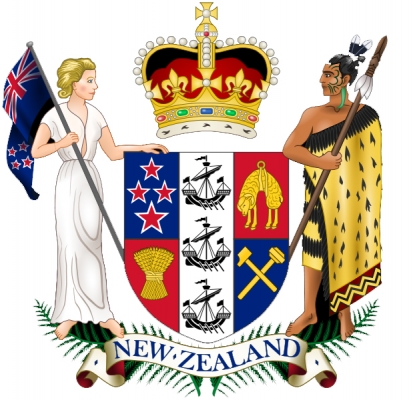New Zealand: New Zealand Outlook for 2013-14
2013/05/15

New Zealander(s) speak English (official), Maori (official).

OVERVIEW
New Zealand will continue to benefit from a stable political environment in 2012-16. The National Party retained power with a strengthened mandate in the November 2011 general election, although it will need to maintain good relations with its coalition partners in order to policy entirely. The prime minister, John Key, is pressing ahead with his policy schedule. This is centred on rebuilding following the earthquakes in September 2010 and February 2011, which is expected to cost NZ$20bn (US$15bn). Fiscal policy will focus on consolidating the public finances, with the aim of returning the budget to surplus by fiscal year 2014/15 (JulyJune) and reducing public debt. In the estimate period the economy will expand by an average of 3.1% a year. Annual inflation is estimate to average 2.1% in 2012-16. A number of Mr Key's policy objectives, such as the partial sales of national assets and moves to boost the extractive sector, are controversial.
Overview
New Zealand will benefit from a stable political environment in 2013-17. The National Party retained power with a strengthened mandate in the November 2011 election, but relies on what is potentially an increasingly unreliable coalition of parties. The prime minister, John Key, is pressing ahead with his policy schedule. This centres on rebuilding following the earthquakes that struck the Canterbury region in 2010 and 2011, which is expected to cost NZ$30bn (US$24bn). Fiscal policy will focus on strengthening the public finances, with the aim of returning the budget to surplus by fiscal year 2014/15 (JulyJune) and reducing the public deficit. The economy will expand by an average of 3% a year in the estimate period. Annual consumer price inflation is expected to average 1.9% in 2013-17.
Political outlook
The government recently announced that the national-owned coal company, Solid Energy, would not be part of the government's partial-privatisation programme, owing to financial troubles at the company. The decision raises questions over Mr Key's fiscal plans, and The Economist Intelligence Unit does not expect the budget to return to surplus until 2016/17.
Economic policy outlook
The Reserve Bank of New Zealand (the central bank) is considering tougher capital adequacy ratios for housing loans in the banking sector, amid growing concern about the risks to financial stability posed by the recent pick-up in home price inflation and credit increase.
Economic forecast
We have revised up our forecasts in the light of recently released data for the fourth quarter of 2012. We presently expect real GDP to expand by 2.9% in 2013, from 2.1% formerly. The current-account deficit will widen this year, to the equivalent of 5.2% of GDP, from 4.5% in 2012.
Outlook for 2012-16 June 2012
- Additional than a year into his second three-year term, the prime minister, John Key, remains popular. His conservative National Party-led coalition controls 64 out of a total of 121 seats in the legislature.
- The government will remain committed to its existing policy schedule, which focuses on reconstruction efforts following the September 2010 and February 2011 earthquakes.
- Although the government has passed legislation for the partial privatisation of a number of national assets, the plans remain controversial, raising questions about Mr Key's ability to achieve his fiscal goals.
- Mr Key has made returning the budget to surplus by fiscal year 2014/15 (July-June) central to the schedule for his second term of office, which ends in 2014. However, it is dubious that he will meet this target.
- Real GDP is estimate to grow by 2.9% in 2013 and at an average annual rate of 3.1% in 2014-17. An development in the world economy will see the external sector contribute an increasing share to economic increase in 2013-17.
- In 2013 consumer prices will rise by 1.6% on average, owing to better request pressures in the local economy and a fall in the price of the New Zealand dollar, which will increase imported inflationary pressures.
Monthly review
- The government recently announced that the national-owned coal company, Solid Energy, would not be part of the government's part-privatisation programme, owing to financial troubles at the company.
- The roll-out of fourth-generation (4G) mobile networks has begun, but the government's decision not to allocate radio spectrum to Maori specifically at the same time as it is auctioned later this year could be challenged in the courts.
- Real GDP expanded by a surprisingly strong, seasonally adjusted rate of 1.5% quarter on quarter in September-December 2012, the fastest pace of increase in three years.
- Merchandise exports rose by 8% year on year in February 2013, to NZ$3.9bn (US$3.1bn). Imports meanwhile grew by 2.6% to NZ$3.5bn, leaving a trade surplus of NZ$414m (US$330m) for the month.
- The Reserve Bank of New Zealand (RBNZ, the central bank) left the official cash rate unchanged at an amount-time low of 2.5% following its new policy review on March 14th.
- The RBNZ is considering tougher capital adequacy ratios for housing loans in the banking sector, amid growing concern about the risks to financial stability posed by the recent pick-up in home price inflation and credit increase.
- Related Articles

Climate change laws around the world
2017/05/14 There has been a 20-fold increase in the number of global climate change laws since 1997, according to the most comprehensive database of relevant policy and legislation. The database, produced by the Grantham Research Institute on Climate Change and the Environment and the Sabin Center on Climate Change Law, includes more than 1,200 relevant policies across 164 countries, which account for 95% of global greenhouse gas emissions.
- New Zealand News
-
- AFGHANISTAN: UNWTO: International tourism – strongest half-year results since 2010
- BRUNEI : The next chapter for the Trans-Pacific Partnership
- AFGHANISTAN: Higher earning Why a university degree is worth more in some countries than others
- NEW ZEALAND: New Zealand December Building Permits Climb 2.3%
- MALAYSIA: The pilot questioned why the plane leaving from Auckland airport was not taking a more direct route to Kuala Lumpur
- NEW ZEALAND: New Zealand Food Prices Fall 0.2% In November
- Trending Articles
-
- EUROPE: Ball Corporation Debuts Three New Aluminium Beverage Can Sizes
- SOUTH AFRICA: Nigeria and South Africa emerge from recession
- CHINA: Xi Jinping opens BRICS Summit in Xiamen, asks members to shelve differences
- NIGERIA: The Security and Exchange Commission approves the 40th Annual General Meeting of Oando PLC
- KENYA: Kenya awards major contract for construction of core infrastructure for smart city
- BAHRAIN: Aluminium Bahrain’s Line 6 Expansion Achieves 25 Percent Completion












